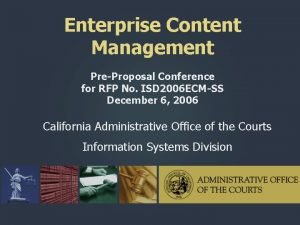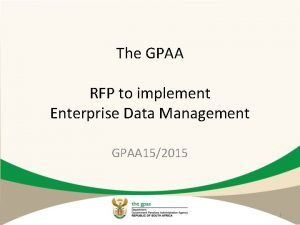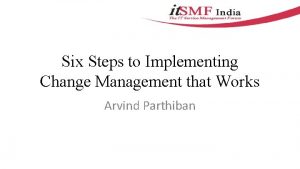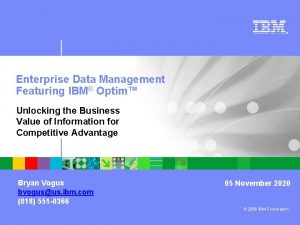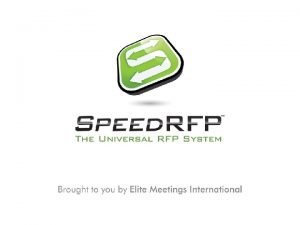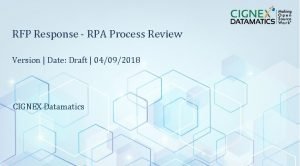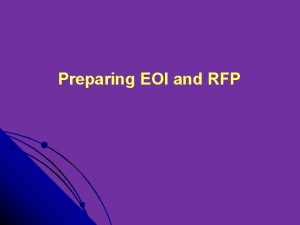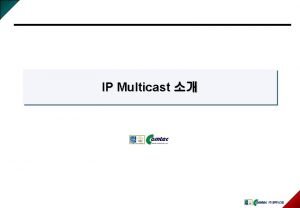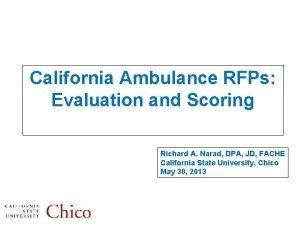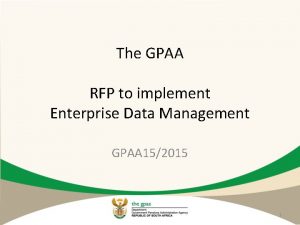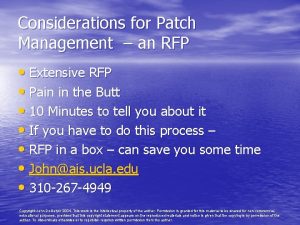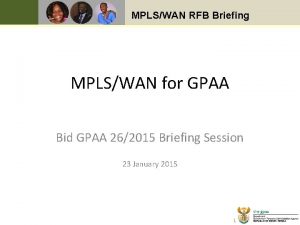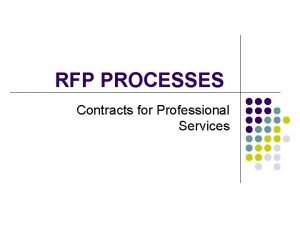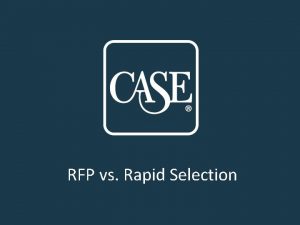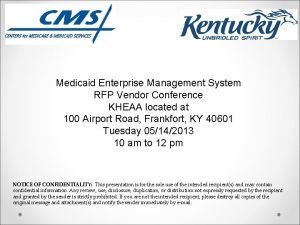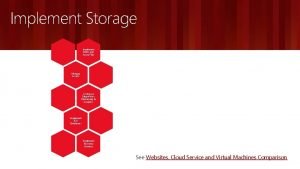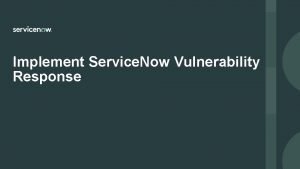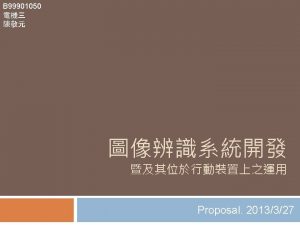The GPAA RFP to implement Enterprise Data Management













- Slides: 13

The GPAA RFP to implement Enterprise Data Management GPAA 15/2015 1

Discussion Points 1. 2. 3. 4. 5. Introduction Components of Enterprise Data Management As-Is To-Be Functional Requirements 1. 2. 3. 4. 6. Data Migration and Integration Master Data Management Enterprise Data Model Data Quality Monitoring Architectural Requirements 2

Introduction • GPAA has embarked on a programme that seeks to modernise and enhance the efficiencies of human capital, systems, processes and technology. • Data quality and management in the organisation is central to the programme becoming a success. • Objective is to establish and operationalise the management of information during the entire life cycle.

Components of Enterprise Data Management Required to sustain, adapt, adopt, embed and operationalise data quality management Data Migration & Integration • Cleansing • Transformation • Distribution Enterprise Data Model • Common Entities • Common Taxonomy Data Quality Master Data Management • Single View • Central Repository Business Intelligence • Monitoring • Key Performance Indicators 4

As-Is Information Flow 5

To-Be EDM 6

Data Migration & Integration • • • Data analysis and profiling Data classification Data cleansing and transformation Data audits, analysis and reconciliation reports Migration strategy and approach Internal and external sources 7

Master Data Management • • • Manage multiple business entities Support best practise data governance policies Integrate to the GPAA security and reporting tools Provide a workflow capability Automatic data services updates based on data model changes Able to create a golden record for any data entity with unmerge functionality Record history of all changes to data Reference data within a central repository Capabilities and functions as services or routines • Membership Management • Pensioner Maintenance • Contribution Management • Benefits Processing • Tax Directives • Accounting Maps • Financial Management 8

Enterprise Data Model • Common data objects or entities and their key attributes • Business and technical terminology • Metadata function to manage the technical, operational, and business metadata • Technical metadata should include legacy platform fields and definitions • Operational metadata should include data transfers, movement, and mapping • Business metadata encompasses business glossary and the common vocabulary. 9

Data Quality Monitoring • Monitor data quality metrics which is linked to key organizational and individual performance indicators • Reports and dashboards that reflect the data quality metrics and known data issues • Consolidated financial information to a single repository for accurate and timely financial reporting 10

Architectural Requirements Architecture Style • Solution should provide the required functionality out-of-the-box Implementation • Data cleansing, migration and configuration part of implementation Qualities • Interoperability, scalability and maintainability Operational • Support full redundancy and expose sufficient and useful instrumentation to perform system monitoring, debugging and performance tuning • Handle increases in load without impact on the performance of the system, and provide the ability to be readily enlarged 11

Architectural Requirements cont. Authentication and Authorisation • Integrate into the Oracle Identity and Access Management system for all identity management and role-based access functionality • Ensure Role-based Access Management is applied usingle sign on (SSO) Integration • Applications, as providers should be decoupled from consumers based on SOA principles to promote the introduction of new applications • Real-time / messaging integration should be completed using the ESB Data Architecture • Provide batch and online data distribution mechanisms • Historic information should be available for extraction into other tools for trending and forecasting • Information should remain confidential when required due to either member preference or legislation. Information classification should be enabled within the architecture to control user access. 12

Thank You 13
 Content management rfp
Content management rfp Rfp best practise
Rfp best practise Implement strategies management issues
Implement strategies management issues Change advisory board
Change advisory board Sybase ebiz impact
Sybase ebiz impact Sql server master data services
Sql server master data services Putting the enterprise into the enterprise system
Putting the enterprise into the enterprise system Enterprise
Enterprise Increase wedding rfps
Increase wedding rfps Indots
Indots Robotic process automation request for proposal
Robotic process automation request for proposal Eoi and rfp
Eoi and rfp Igmpv
Igmpv Pass fail evaluation method
Pass fail evaluation method
